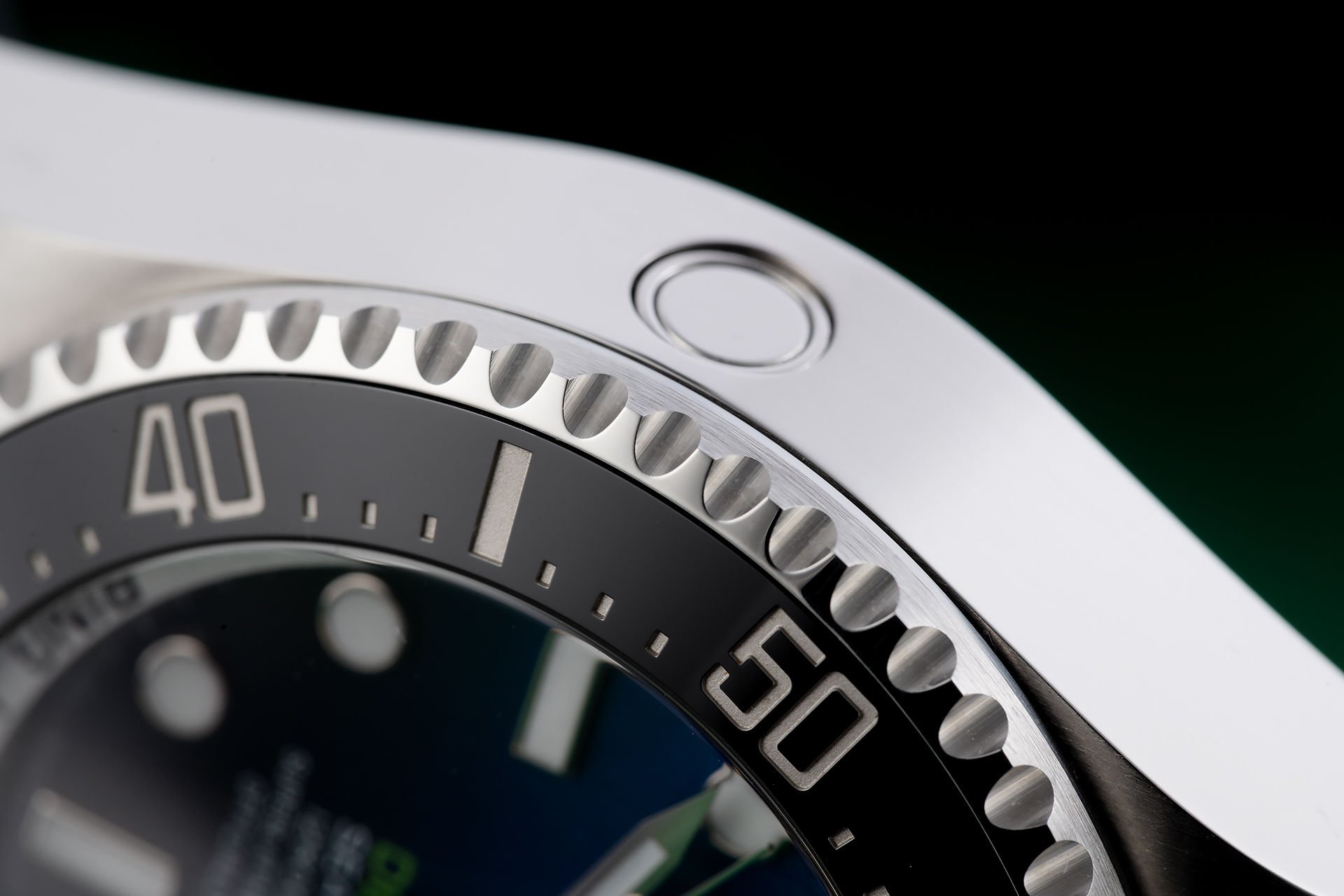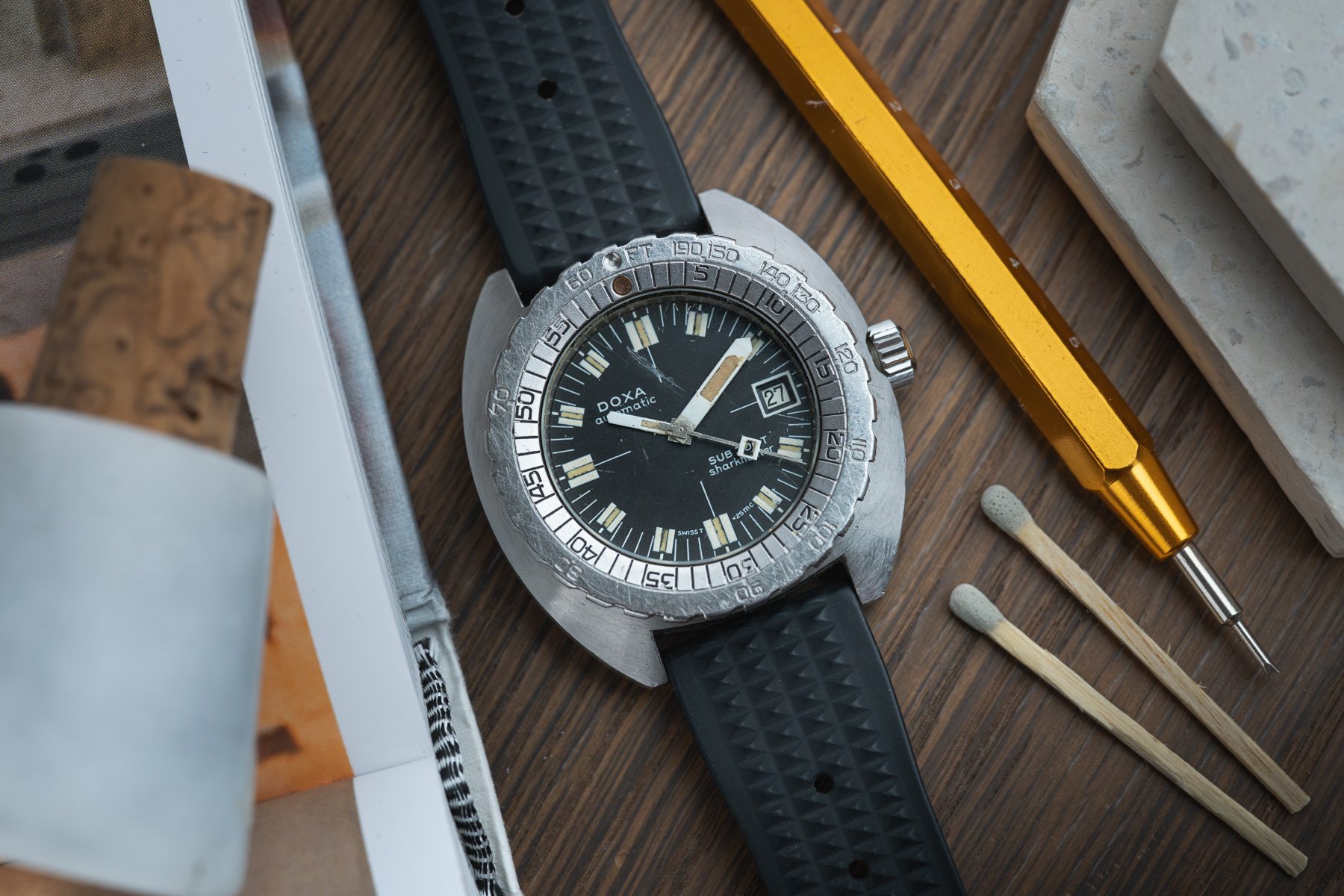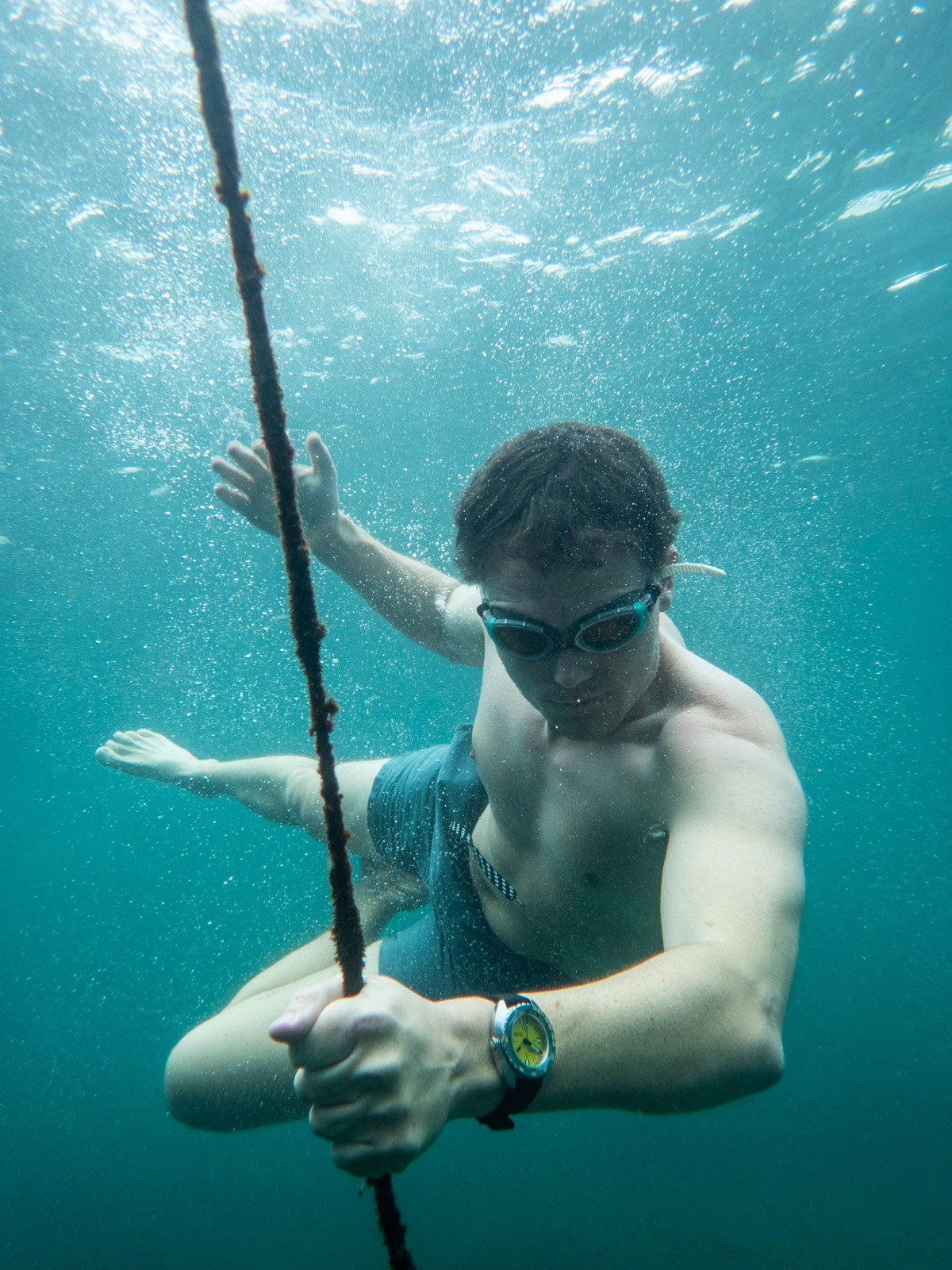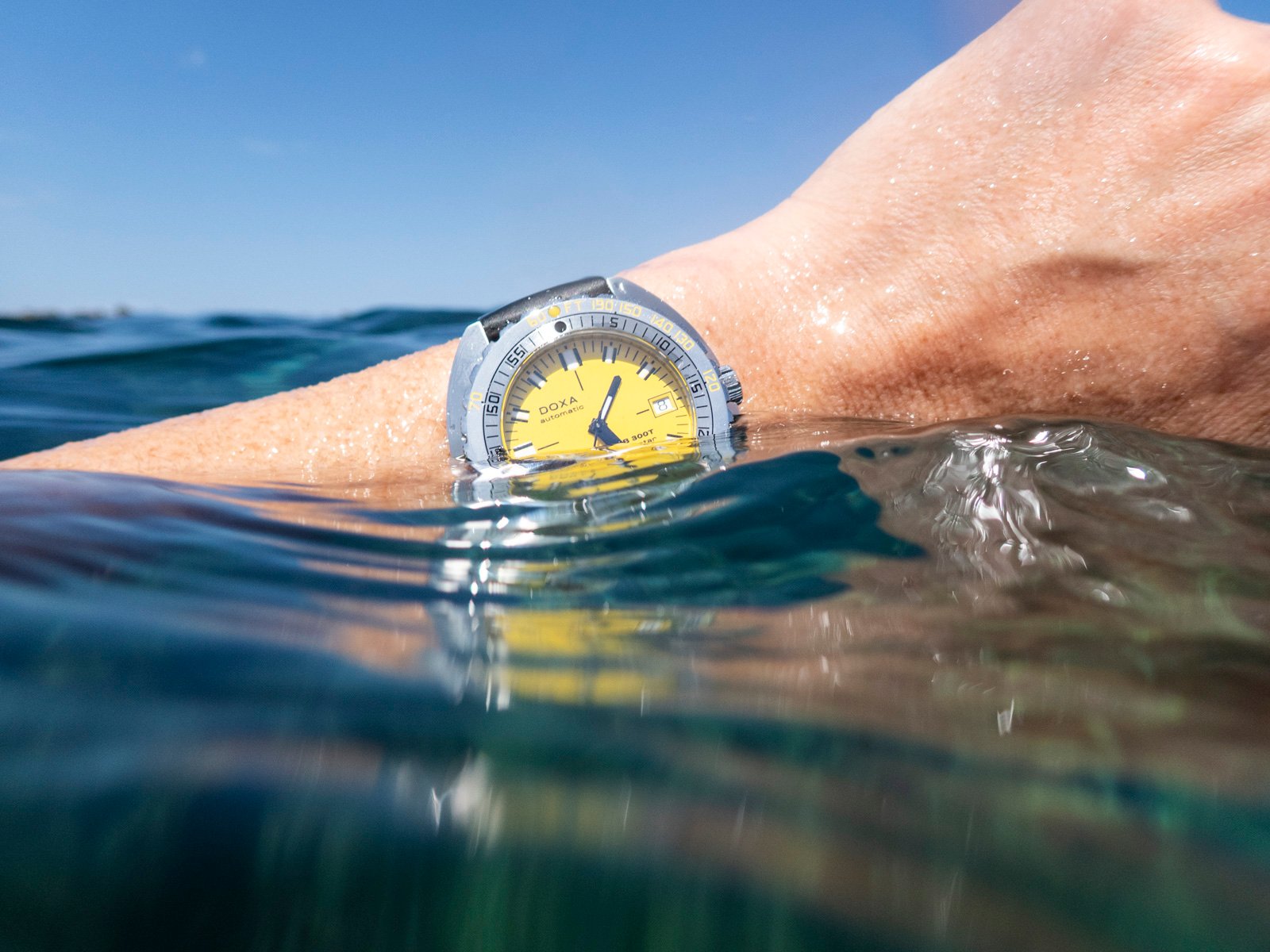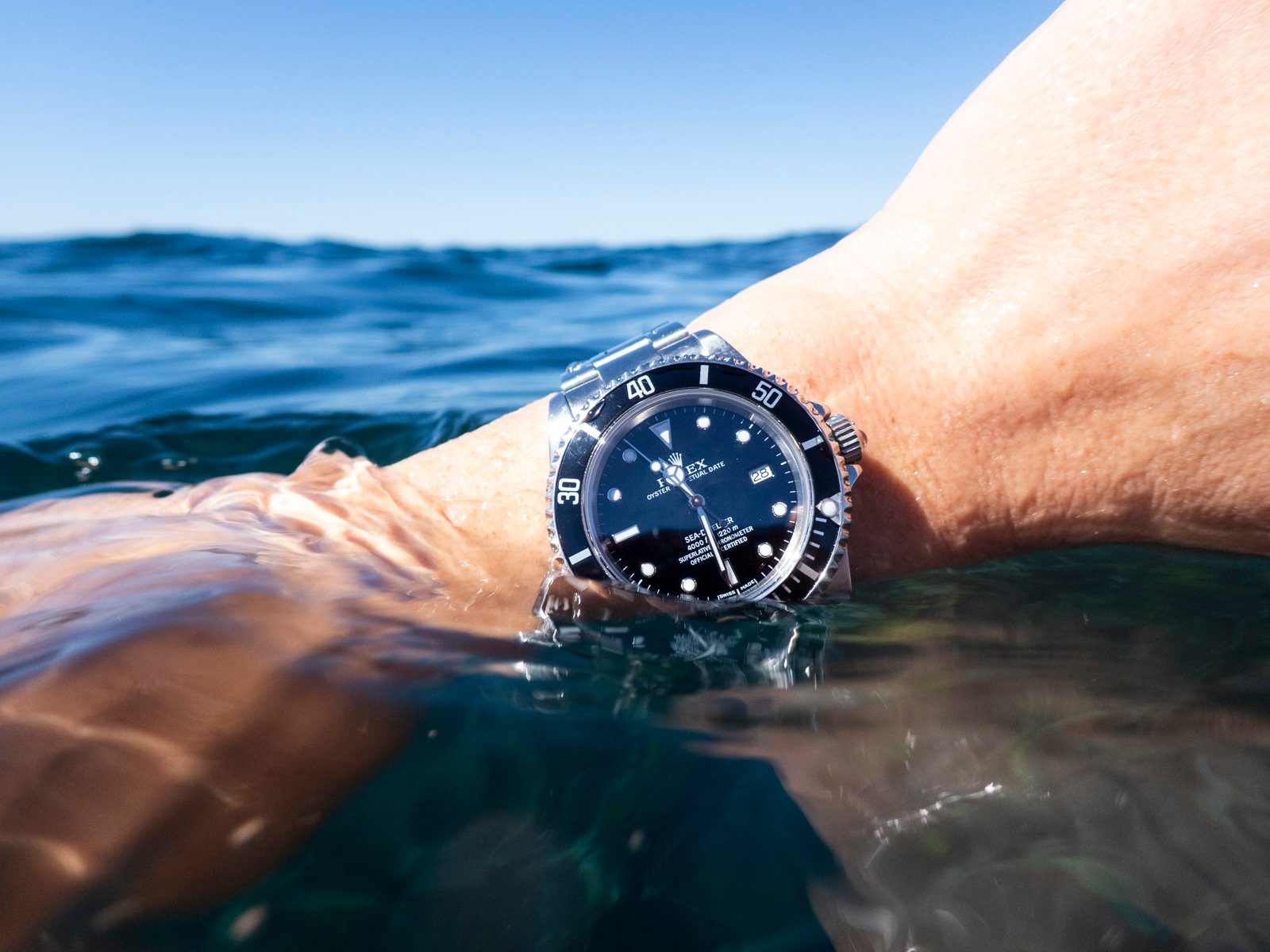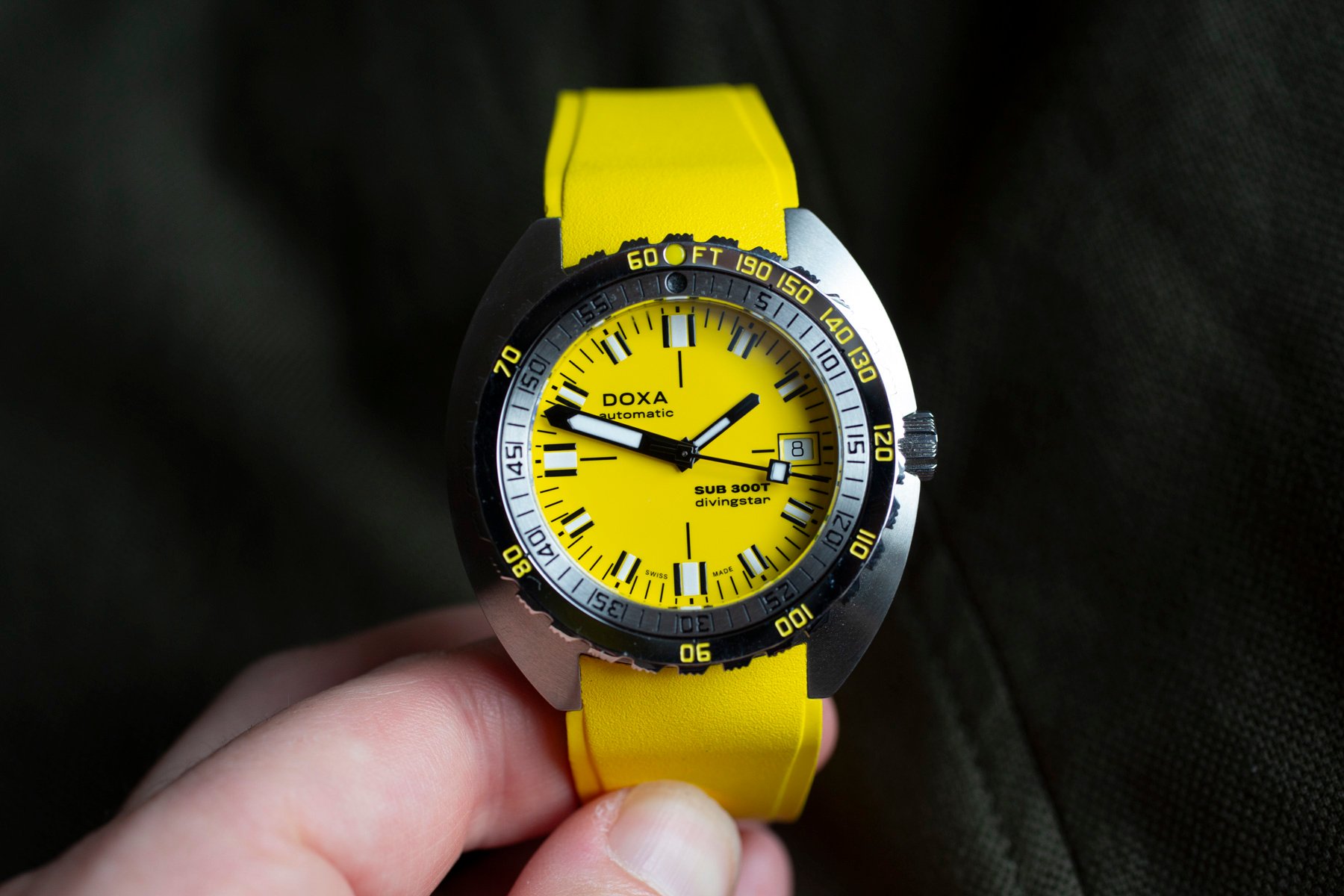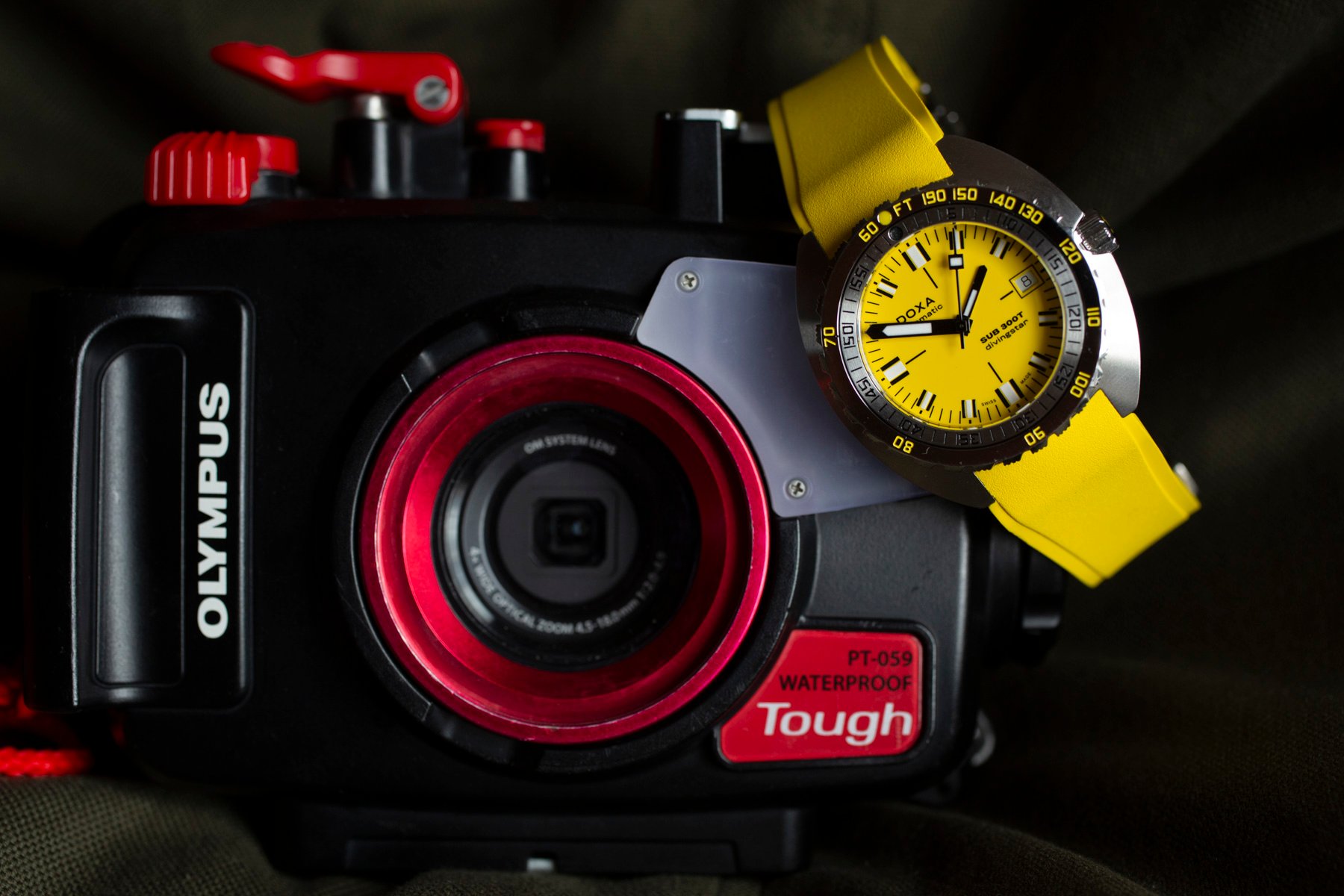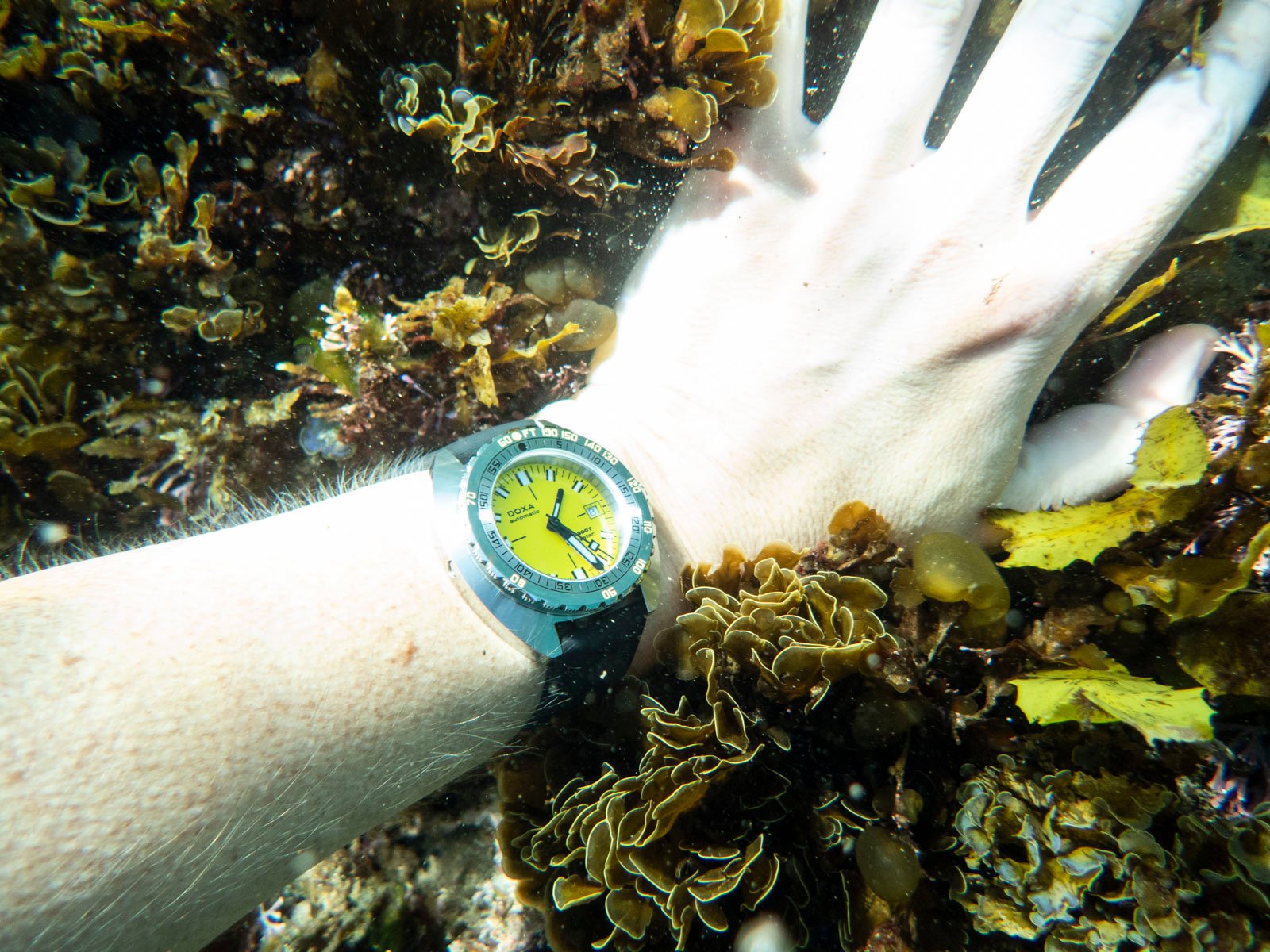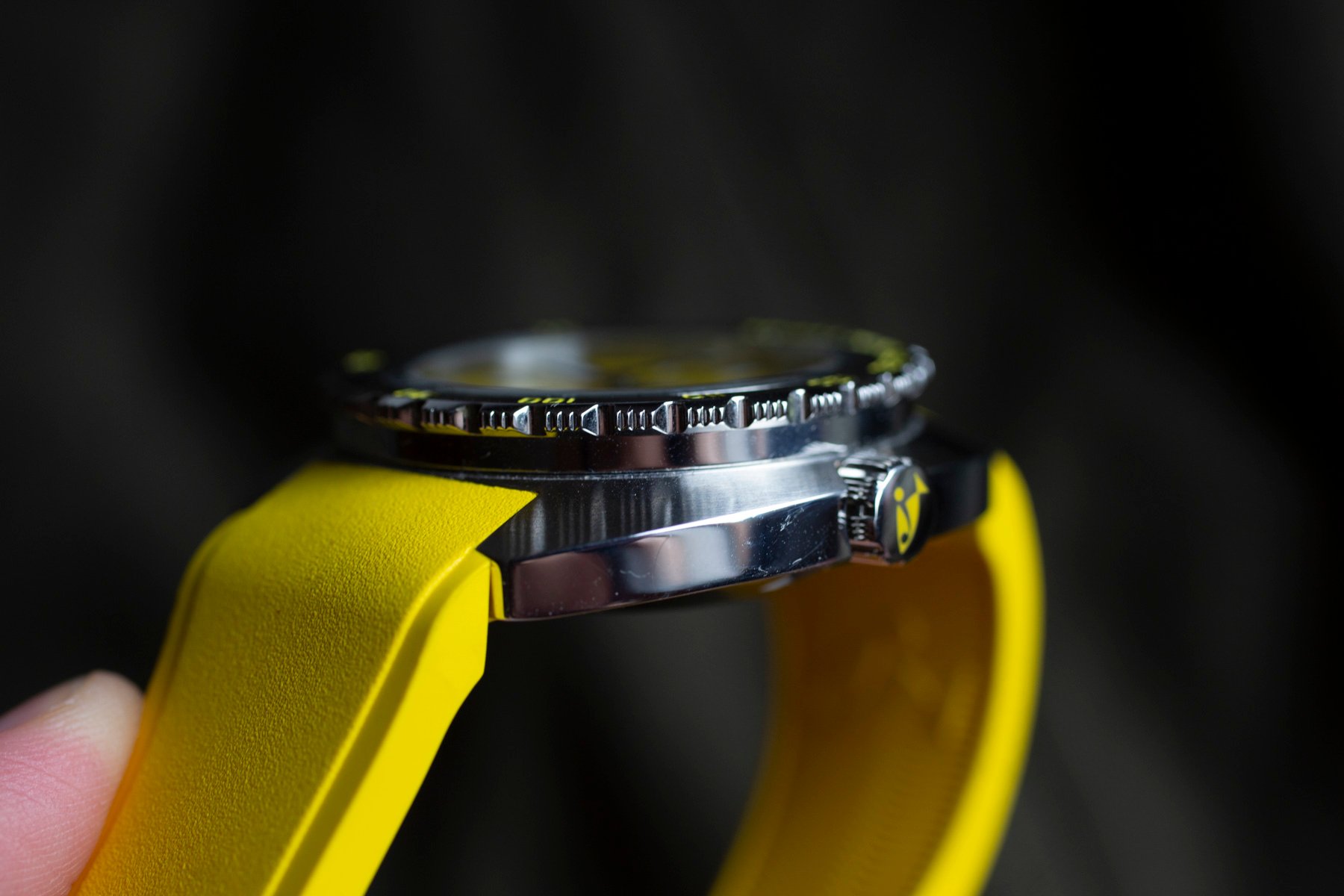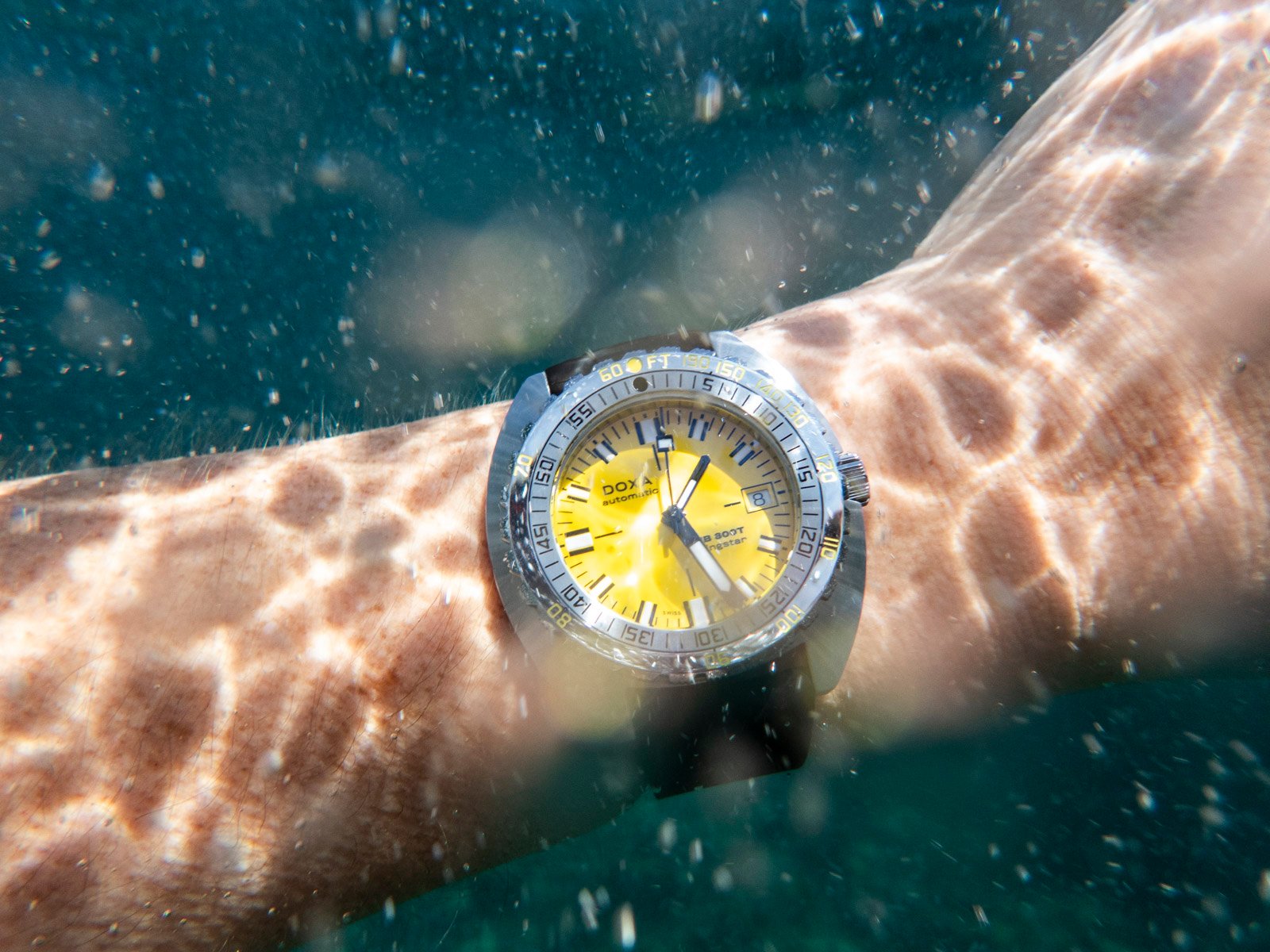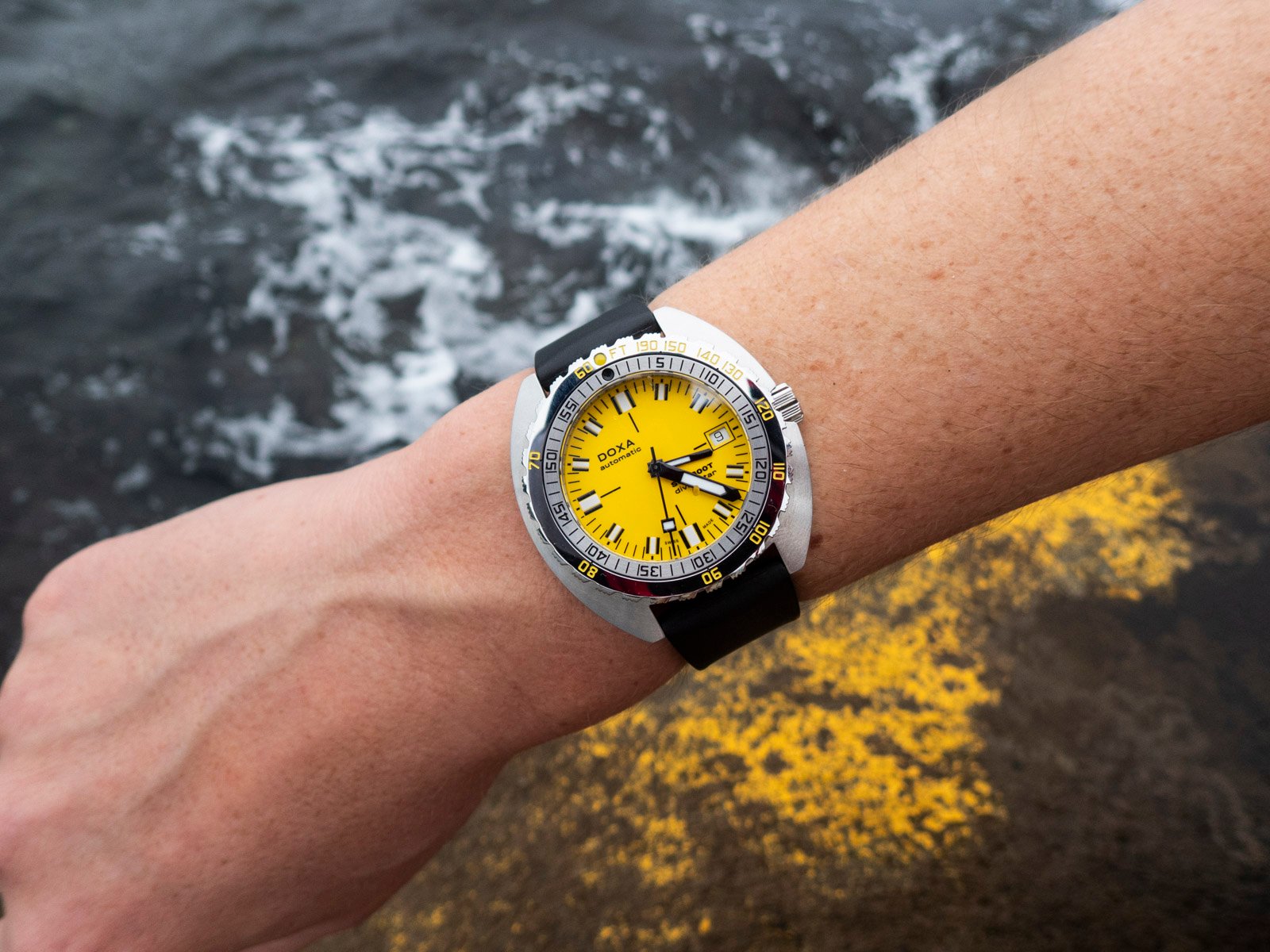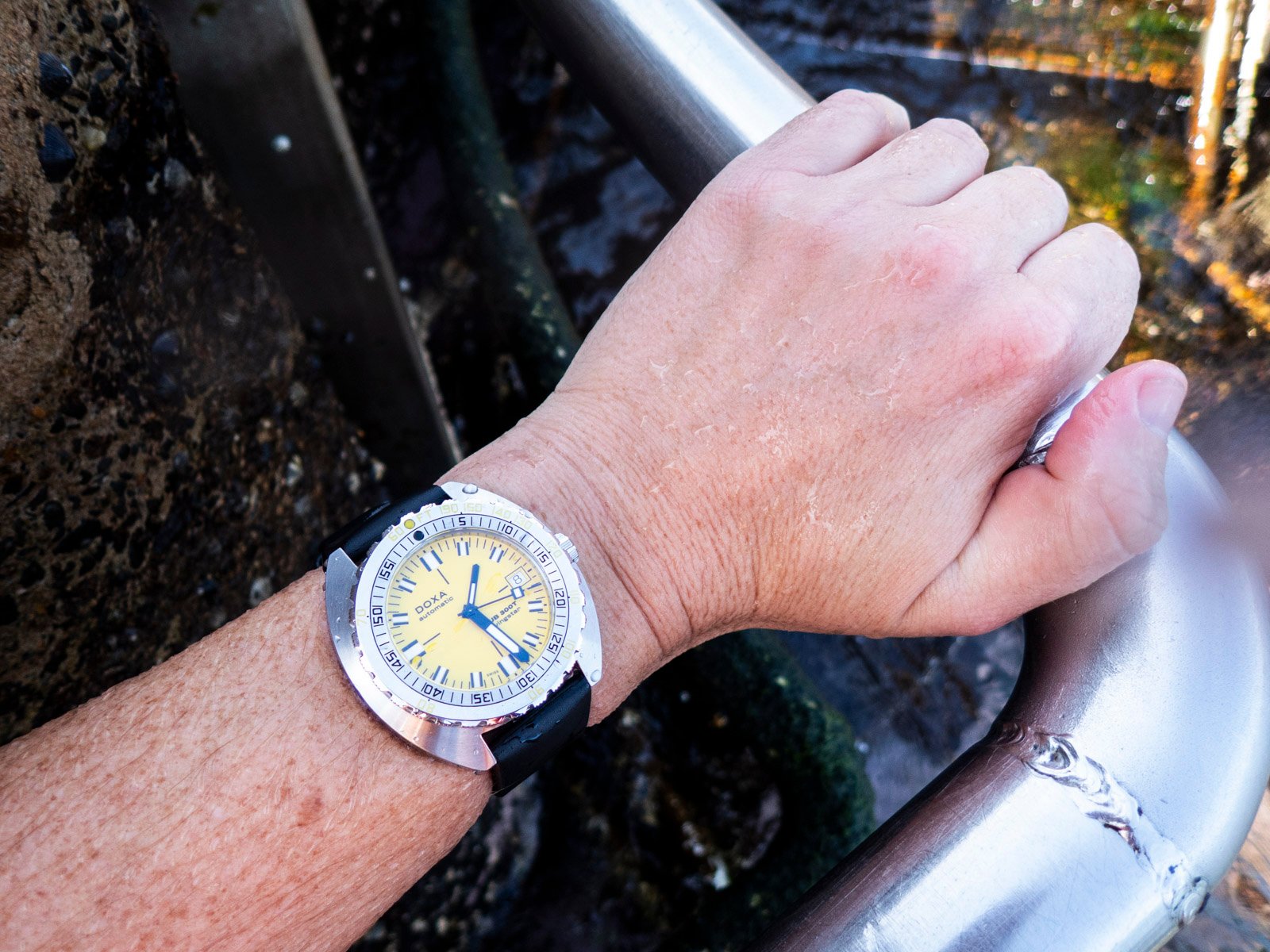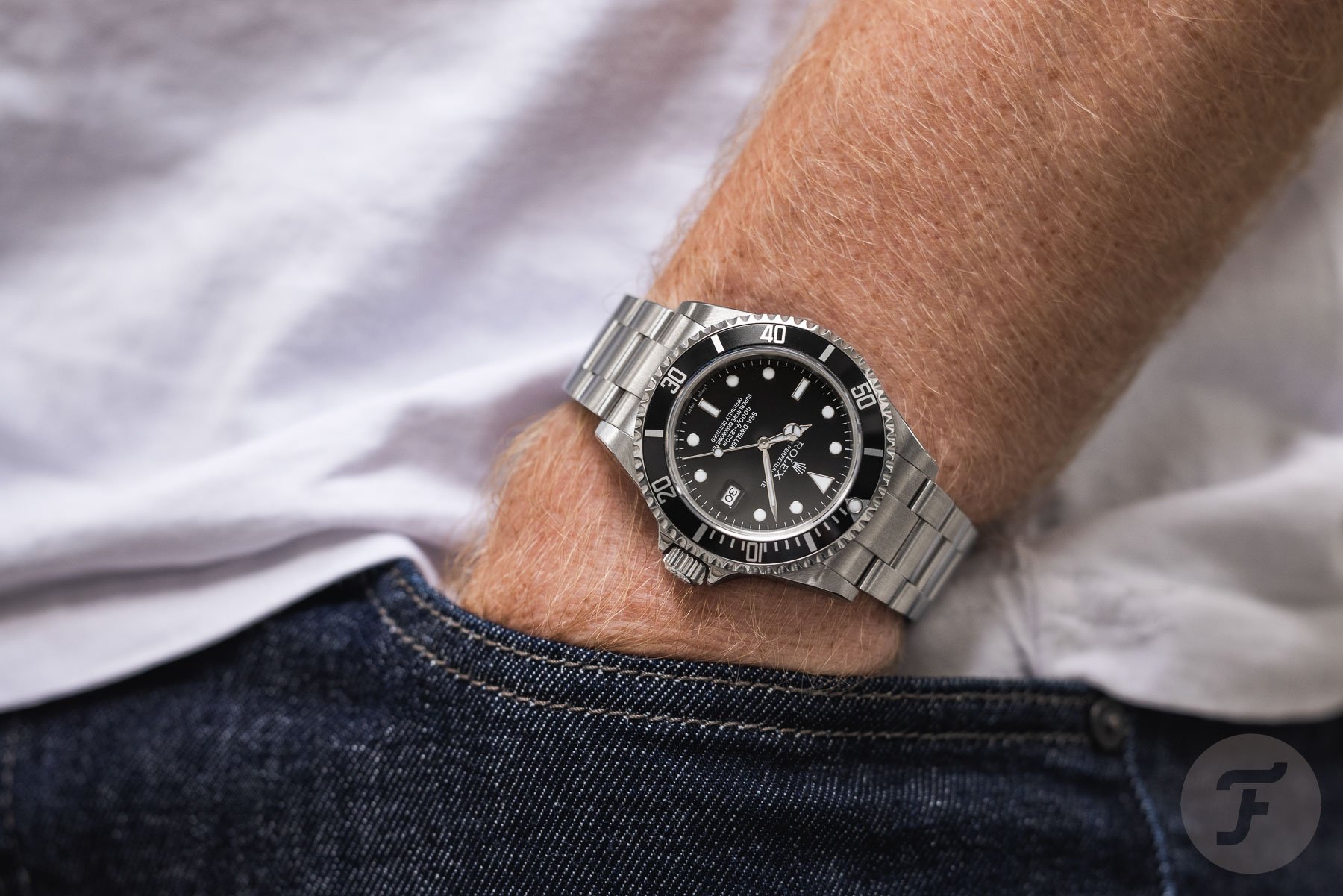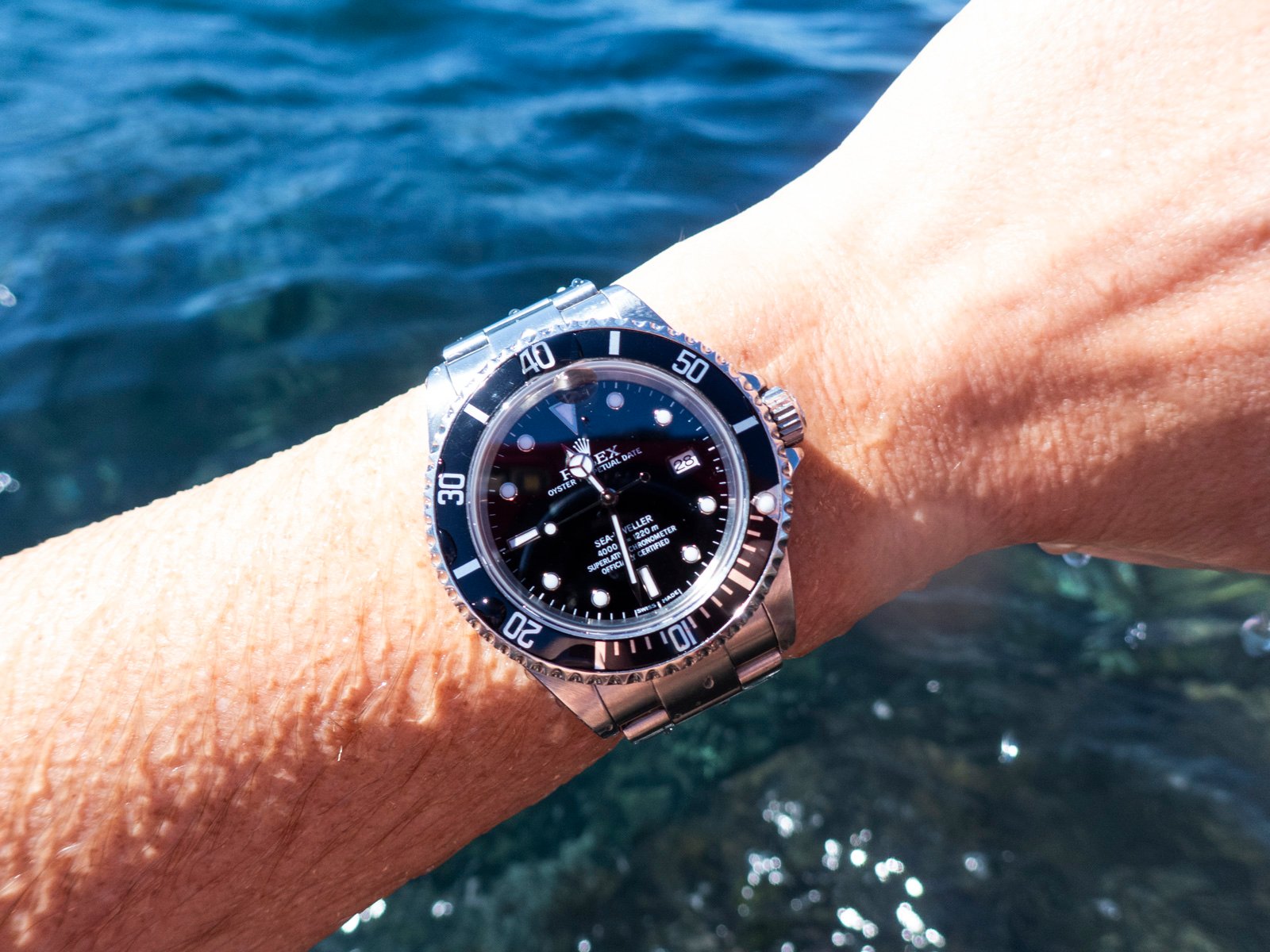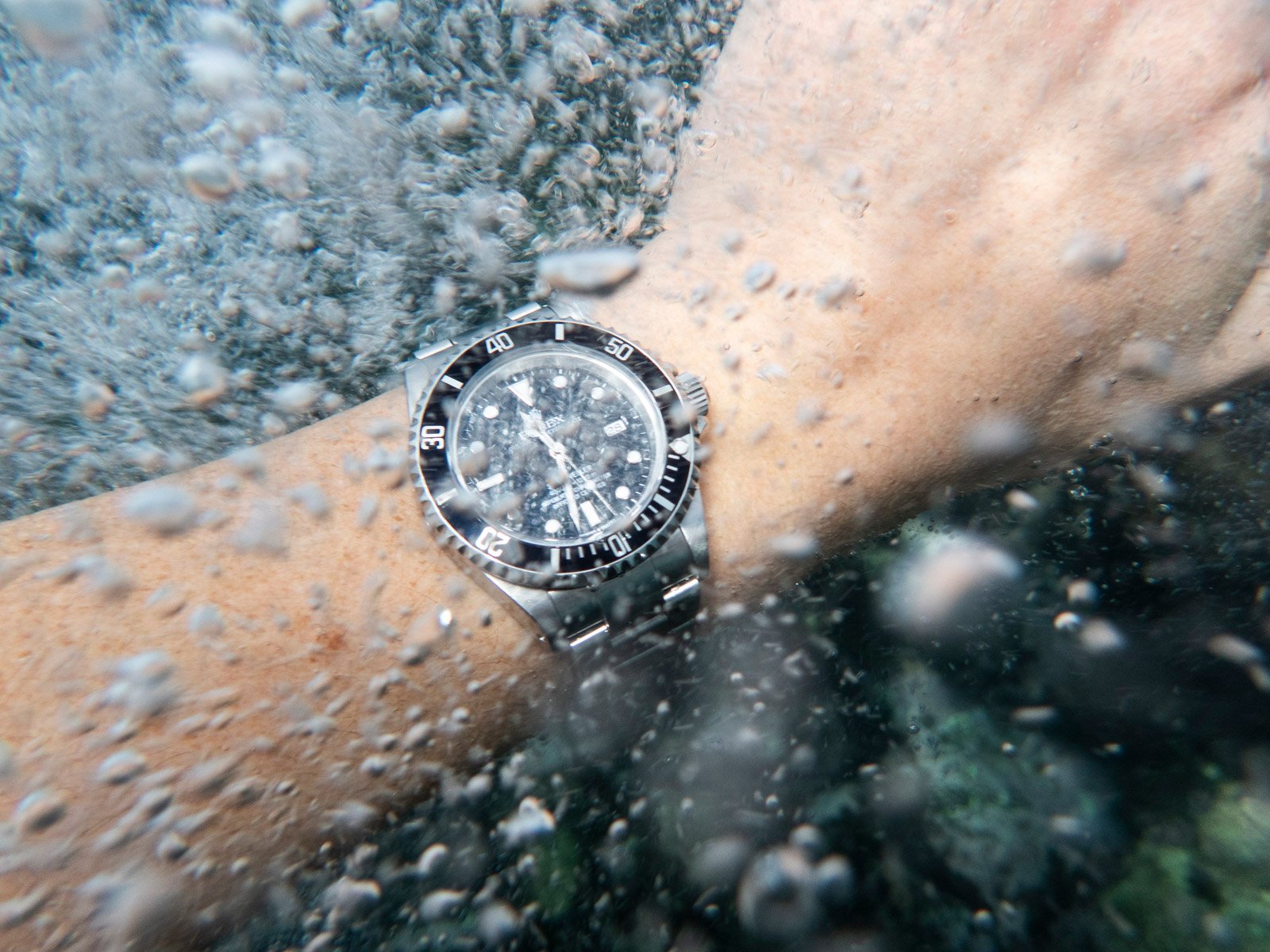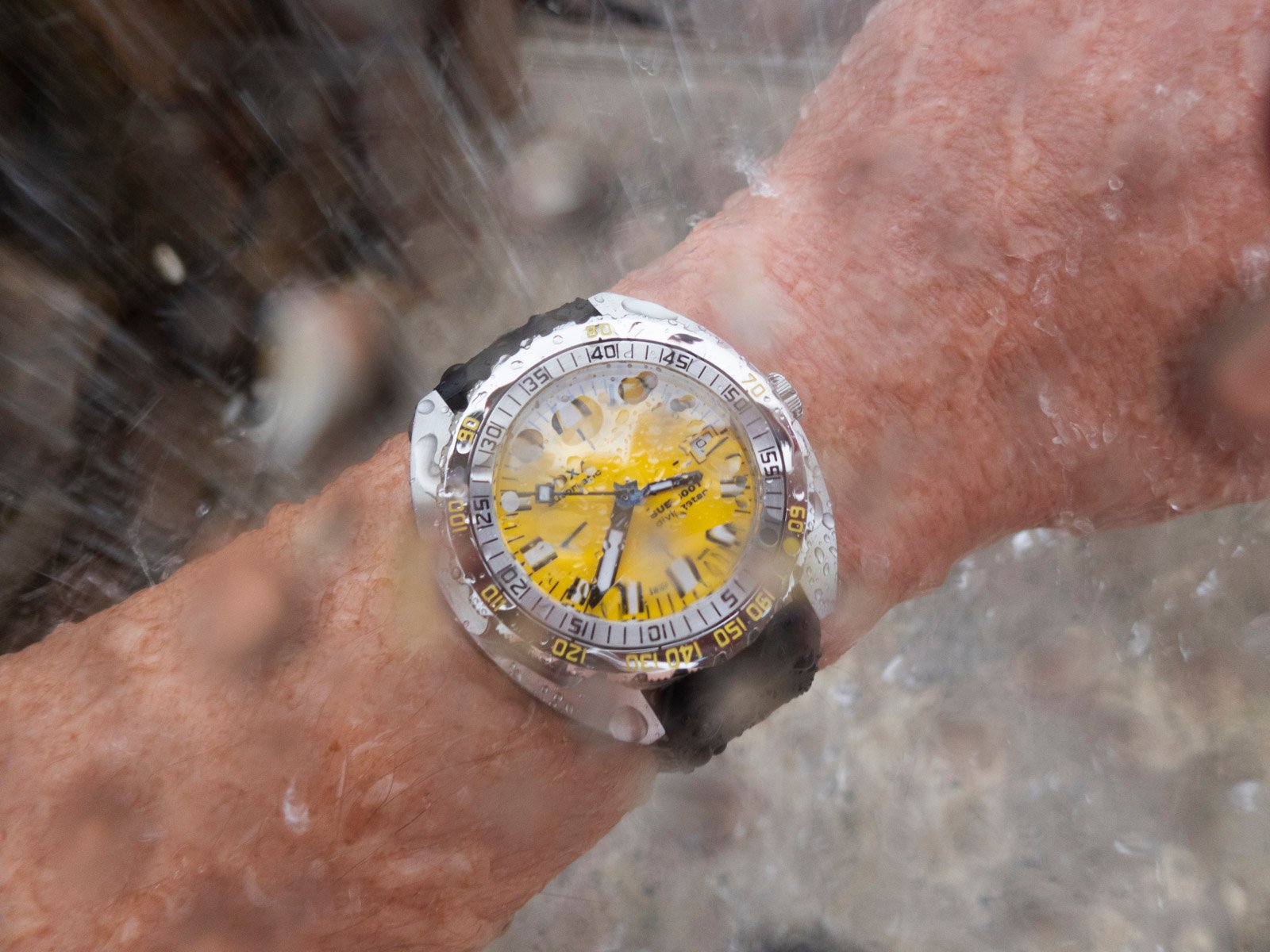The Rolex Sea-Dweller Vs. Doxa’s Sub 300T: A Battle For The Burly Wristed
Let’s rewind to the golden age of scuba diving and, some would say, sports-watch design. It is the 1960s, and Doxa and Rolex are co-developing a specialized technology that will allow their ultimate diving watches to endure the rigors of the deep.
A consistent issue had been noted after dive watches had spent time at considerable depths. Helium particles would get trapped inside these watches and force the crystals to pop off during an ascent. It had troubled Rolex and Doxa, who were at the forefront of dive-watch design in the 1960s.
Rolex and Doxa develop the HEV
The two companies would end up developing the helium escape valve, or “HEV” for short. It would allow helium particles to escape through a valve system integrated into the case of the watch. The two companies would quickly adopt this new technology into their flagship scuba-capable watch lines. Rolex had the Submariner, and Doxa had the Sub 300. Both were highly capable and technically advanced dive watches for their time, though they followed drastically different design languages.
Doxa developed a watch that would become known as the 300T Conquistador. It was a burly timepiece that reflected the iconic cushion-cased design that those familiar with the Sub 300 would recognize. Essentially a beefed-up Doxa Sub 300, the Conquistador provided water resistance to an impressive 1,200 meters along with the new HEV technology.
Doxa and Rolex — two titans of dive watches
The Doxa Sub 300T was a dive watch through and through. Even the bezel had a specialized and patented design that would show a no-deco limit as well as elapsed time. The Doxa Sub 300T Conquistador came out in 1969, making it the first commercially available dive watch with an HEV.
In 1971, Rolex would release its first watch utilizing this technology. The super Submariner would be called the Sea-Dweller. The Sea-Dweller line had already been in existence since 1967 with the release of the reference 1665. This watch had a depth rating of 1,640 feet (500 meters) and then, shortly thereafter, 2,000 feet (610 meters), less than the 1968 Conquistador. The Sea-Dweller 1665 would incorporate the HEV but would not be commercially available until 1971. Therefore, in short, Rolex introduced an HEV-equipped dive watch in 1967 but would not release it to the public until 1971. Doxa released the first publicly available dive watch with an HEV in 1969.
Doxa and Rolex in the modern context
Let’s fast-forward to the decades that followed the introduction of both watches. Doxa, once a mighty brand that commanded deep respect and significant asking prices, faded into relative obscurity following the Quartz Crisis. There were a number of phases the company went through, and it continued to develop interesting designs up until the 1980s. It is now owned by the Jenny family, who also have a long and storied past in the world of dive watches.
Rolex, on the other hand, managed to go from strength to strength and became the world’s dominant name in horology that it is today. We also saw the ongoing development of the Sea-Dweller line. We have seen immense technical upgrades from the original reference 1665 of the 1960s.
The Doxa Sub 300T versus the Rolex Sea-Dweller
Today, I’m comparing my new-to-me neo-vintage Rolex Sea-Dweller ref. 16600 against the modern Doxa Sub 300T. You see, I will argue that since we have a revitalized Doxa, we are in a fortunate position to have a watch that matches the Rolex in terms of heritage and a storied past but without the commensurate price tag. Let’s dive in.
The modern Doxa Sub 300T comes in so many colors, but I opted for the yellow Divingstar version for this story. The reason is that yellow was one of the four original colors the Doxa Sub 300T came in back in the 1960s and 1970s. The other colors were black (Sharkhunter), orange (Professional), and silver (Searambler). Unlike the vibrancy of Doxa, Rolex was happy to offer a Sea-Dweller as long as it was in black. The brand tends to take a traditional (even staid) approach when it comes to dial colors for its professional series. This was especially true in the 1960s.
The Doxa Sub 300T
Doxa’s Sub 300T has a 42.5mm stainless steel case with a 44.5mm lug-to-lug and a 14mm thickness. Thanks to the compact length, this case feels rather snug on even my smaller 15.6cm (6.15″) wrist. The watch comes on either a rubber strap or a beads-of-rice bracelet with a diver’s extension in the clasp. It’s a ratcheting system that is rather effective.
At 3 o’clock, we find a screw-down with the Jenny fish symbol printed on it, and inside beats a Swiss ETA 2824-2 or Sellita SW200-1 caliber. This provides 38 hours of power and a standard 4Hz beat rate. The caliber, though a little long in the tooth when it comes to specifications, is a reliable workhorse that makes for easy servicing.
How does the Doxa Sub 300T feel to wear?
The bezel is Doxa’s patented unidirectional system with elapsed minutes as well as a no-decompression-limit dive table. The action is nice and firm without any play, and the 120 clicks feel rather satisfying in use. There is a degree of Super-LumiNova on the hour indexes and the 60-minute marker on the bezel, though it is not particularly strong given the depth rating and technical nature of the watch. Let me put it another way: it does the job but isn’t anything to write home about.
The watch feels solid and well made. The dial is nice to look at, and it is highly legible. There is also a quirky playfulness to Doxa watches, which is wonderful to behold in the metal. Overall, taking this watch into the ocean is a fun experience. Its spec sheet promises durability, and the feel of the watch certainly backs that up.
Moving to the Rolex Sea-Dweller
When I compare the modern Doxa Sub 300T to my Rolex Sea-Dweller 16600 (from 2000), there is an instant jump in the degree of watchmaking before me. This makes sense as the Rolex is well beyond the modern Doxa in price. My Sea-Dweller has been polished once by the brand during a service, so some of the brushing and polished lines have shifted from how it would have appeared when brand new. Regardless, this is a watch that wears its scratches well.
The Rolex Sea-Dweller 16600 wears smaller than the modern Sub 300T. This is in spite of the fact that it has a longer lug-to-lug. I think it probably boils down to the fact that the dial aperture is smaller on the Rolex. The 16600 was produced from 1989 all the way to 2009. It has a 40mm case with a 14.5mm thickness, and the alloy is Rolex’s 904L Oystersteel.
Inside ticks the Rolex caliber 3135. It’s an automatic movement with a 48-hour power reserve and a 4Hz beat rate. This is one of Rolex’s bulletproof workhorse calibers. It has 31 jewels and a date complication. The watch boasts a depth rating of 1,220 meters (4,000 feet), surpassing the Doxa 300T by a negligible 20 meters. Unlike the Submariner, it’s missing the date magnifier, which makes for a cleaner appearance overall.
The Rolex Sea-Dweller has the edge
It should come as no surprise that when handling both watches, the Sea-Dweller, despite being 25 years old, has the edge. But I would like to say that both feel worthy of the technical dive history behind them. The Doxa Sub 300T truly does have the same level of heritage as the Sea-Dweller. It’s also a more playful and fun option for those after a more distinct design language.
On the technical front, there are differences, to be sure. The Super-LumiNova on the Rolex Sea-Dweller 16600 performs much better, and the details showcase a higher degree of watchmaking, which reflects the price premium. But the Doxa Sub 300T has a rugged and honest quality to it that is very endearing.
Concluding thoughts
For those of you after something with the technical heft of one of the original dive watches that pushed the boundaries of what was technically possible, look no further than these. If you’re open to something that isn’t a Rolex, the Doxa is worth your time.
But what option would you go for, Fratelli? Let me know in the comments. Omega produced another super technical dive watch, the Ploprof, which is an intriguing piece of design. There’s also the Planet Ocean. Then, we have a multitude of options from brands like Nivada Grenchen, Certina, Ollech & Wajs, and even Tudor with the Pelagos line. When it boils down to heritage, though, it’s the Sea-Dweller and the Sub 300T that originally went head to head in the 1960s and 1970s. It’s great that we can recreate that rivalry in the modern day.

